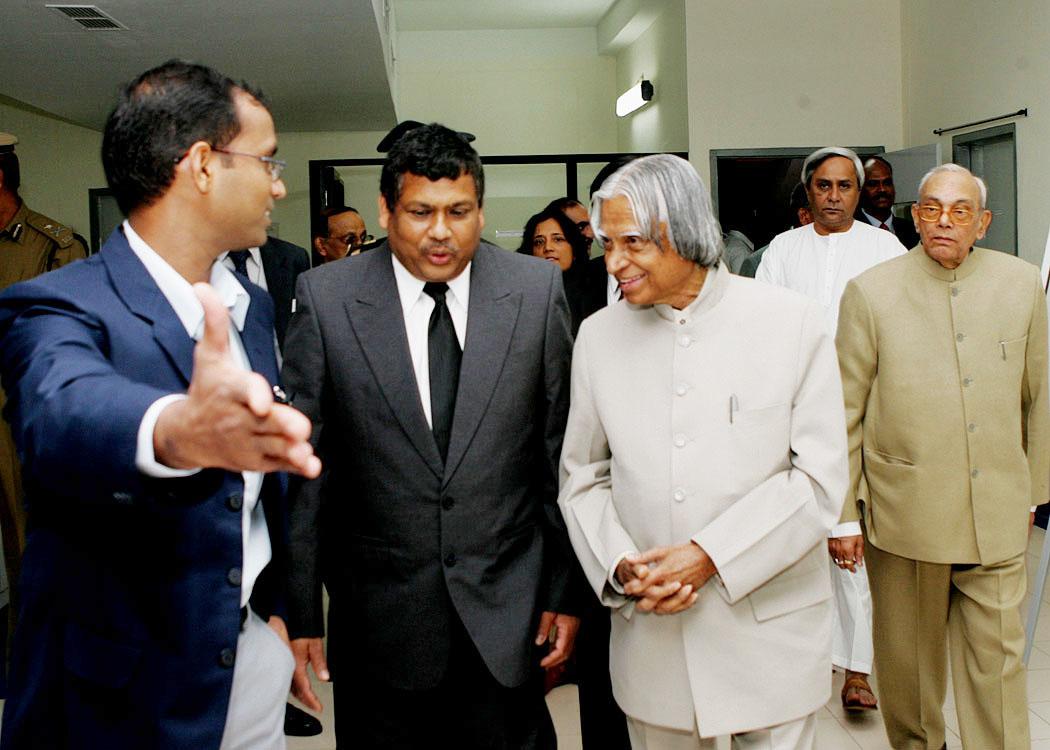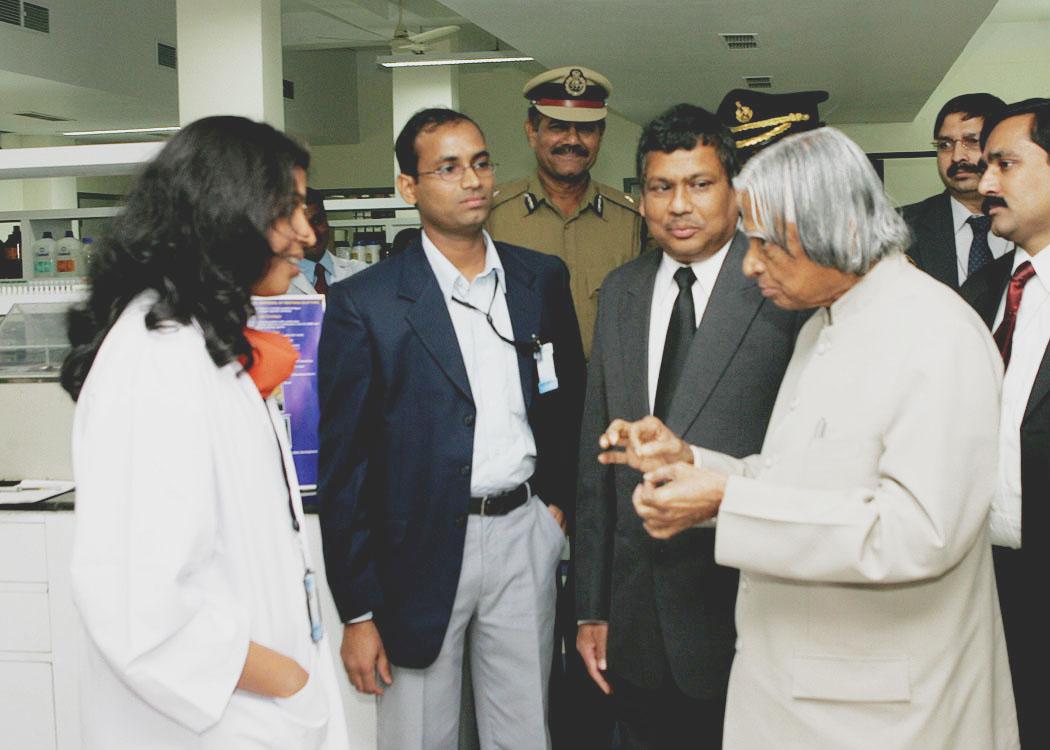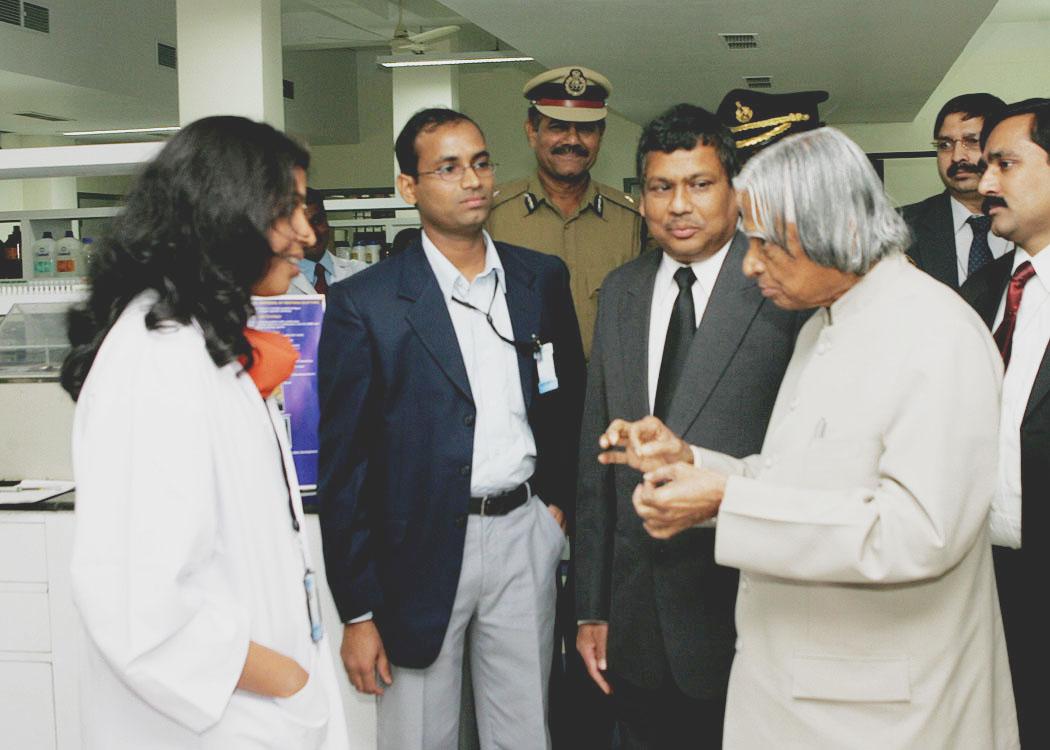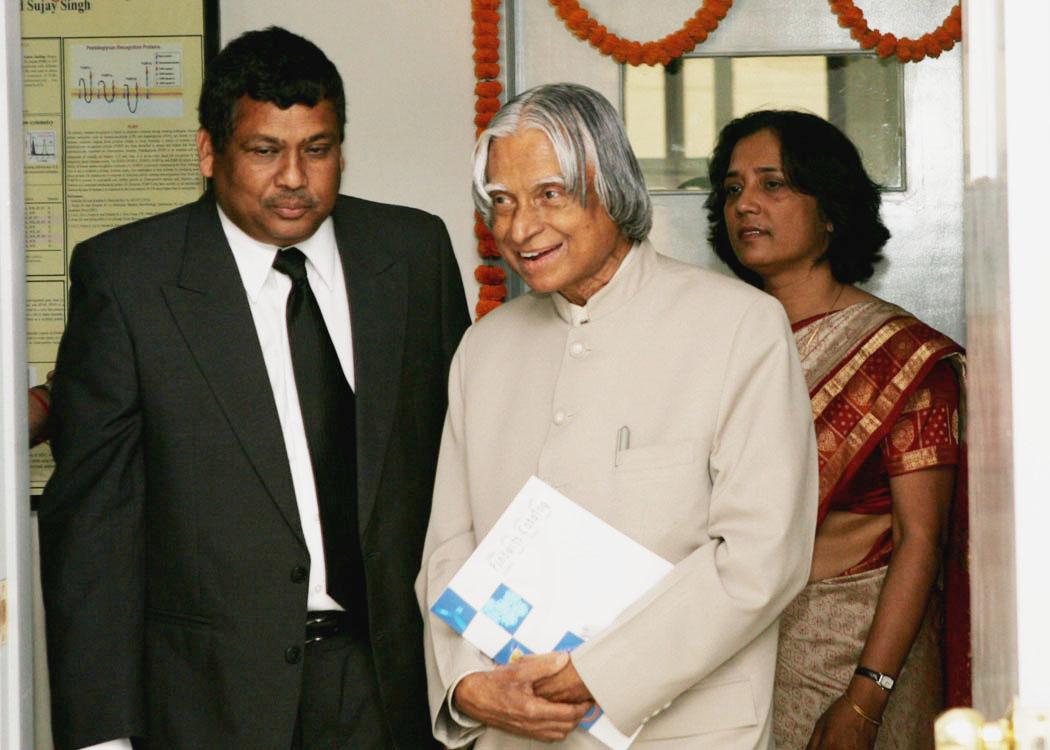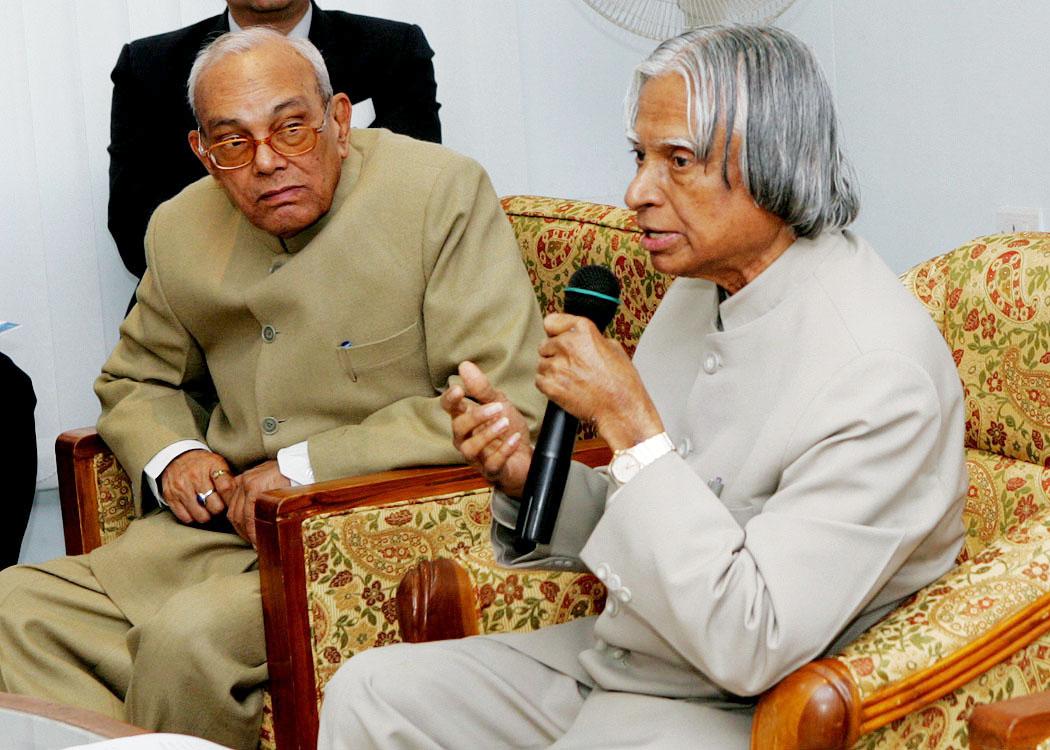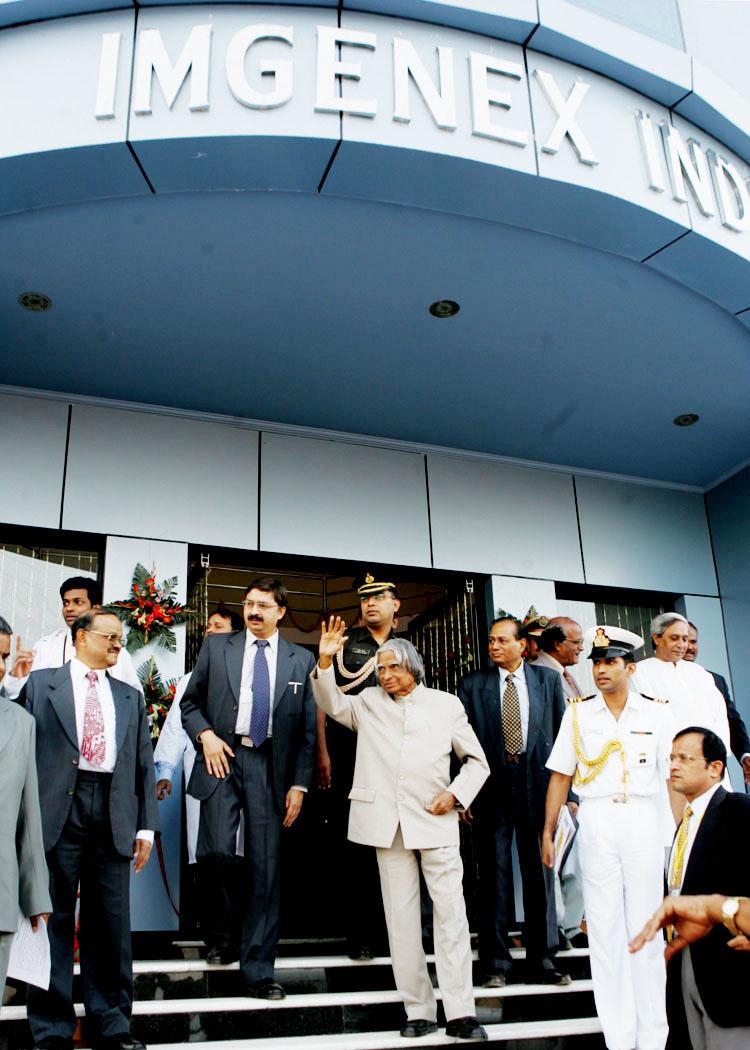Address At The Inauguration Of The Biotech Laboratory Of Imgenex India Pvt. Limited, Orissa
Orissa : 27-12-2005
Research areas in Medical Diagnostics
I am delighted to participate in the inauguration of the Biotech Laboratory of IMGENEX India Pvt. Limited in Bhubaneswar. I greet the organizers, doctors, medical scientists and technologists, pharmacologists and other participants in this function. I understand that IMGENEX India develops and commercializes novel reagents for the scientific study of human biology and disease and for the production of new diagnostic assays which includes reagents like antibodies, gene and protein expression systems for studies in functional genomics. I would like to discuss on the topic ?Research areas in Medical Diagnostics?.
Diagnostic kit for Typhoid
When I think of medical diagnostics, I am reminded of an advanced Research and Development related to diagnosis of typhoid, a water borne enteric disease which has been accomplished in a DRDO Laboratory in India. The conventional Vidal's test is an antibody based test. It takes about 3-5 days for diagnosis as the test is based on antibodies development. It takes considerable time for antibody titre build-up. Since the new test developed by DRDO is antigen based test, it takes only about 5 minutes for diagnosis as it measures directly the antigen itself. It is a very innovative approach which led to the development of a new diagnostic test; the technology has been transferred to a pharmaceutical industry for production and marketing. The diagnostic kit will soon be available at an affordable cost. DRDO is now currently engaged in developing a Biosensor based on antigen-antibody interaction. In future, it is aimed to develop carbon nano-tube based Biosensor. Now I would like to discuss about the Health status of India.
Health status of India
India has made considerable progress in its health status since its Independence and particularly during the last fifteen years. At the time of Independence, the life expectancy of an Indian was less than thirty years. Between 1991-2005, the life expectancy of Indians has gone up from 58 to 64.35 years, infant mortality has come down from 87 to 60 deaths per 1000 live births and population growth rate has decreased from 1.9% to 1.4%. Still infant mortality is very high. We have to bring it to the level which has been achieved by Kerala.
I would like to briefly talk to you on some of the diseases which are definitely a concern for Indian citizens.
Tuberculosis
There is an effort to bring the entire country under the Revised National Tuberculosis Control Programme (RNTCP). So far, 93% of our country has been brought under this programme and by October the entire country has become part of this programme. This will ensure that at least 75% of the total Tuberculosis cases are detected every year and brought under direct surveillance. The treating agency must ensure that at least 80% success in fully curing the disease is achieved within the year. If this regime is followed continuously for over ten years our tuberculosis load will come down to less than ten per one lakh of population. For achieving this it is essential to work faster on the development and clearance of new diagnostic kits and drugs.
Drug for faster cure of tuberculosis
India has made significant contributions in developing drugs that are critically required for us. One of the achievements comes from a laboratory of the Council of Scientific and Industrial Research (CSIR). CSIR lab has developed a new therapeutic molecule for Tuberculosis. This molecule has shown the potential to cure TB in around 2 months, as against the standard treatment of 6 to 8 months. This breakthrough is very important. After completing the pre-clinical studies, the molecule transformed into a drug called Sudo-terb is scheduled to undergo clinical trials in humans. This development has been done as a public-private partnership involving the Lupin, the three CSIR Laboratories, namely, Central Drug Research Institute, Indian Institute of Chemical Technology and National Chemical Laboratory, and the University of Hyderabad. It is hoped that the drug will be in the market soon after the clinical trials. In addition to the above, there is also a need to develop a more effective vaccine against tuberculosis. The combined action of surveillance, detection and disciplined treatment have to work together to ensure faster cure of existing cases. Prevention of future cases has to be achieved through R & D efforts of developing new breed of vaccine and medicines. I am sure the scientists of IMGENEX Pvt. Limited can definitely work as partners in the development of a new vaccine for Tuberculosis.
Malaria
Incidence of Malaria has reduced from 22 lakh to 18 lakh in the period 1998-2003. However, the death cases has increased from 644 to 943. I understand that the conventional medicine used for treatment of Malaria namely Chloroquin has become resistant to Falciparum which causes cerebral Malaria. Our scientific community has developed and produced a drug named Arteether from Artemisinin which has been found to be an effective cure for cerebral Malaria. I understand that this drug is being exported to over forty countries. Also, Ranbaxy has acquired a malarial drug molecule and they are progressing towards clinical trials. The fully developed drug will be available in the market soon. This will be another important milestone in the treatment of Malaria.
Over the years I find that in spite of our efforts there is no rapid reduction in the occurrence of Malaria cases in the country. While taking up new projects it is essential to have multi-faceted inter-sectoral collaboration between various partners so that the impact assessment of the project on new type of diseases can be foreseen and suitable preventive action taken to contain the disease. In addition to this we have to improve the surveillance, develop rapid diagnostic kit and use the conventional prevention methods of spraying to control the vector. International Centre for Genetic Engineering and Bio-technology in collaboration with Bharat Bio-tech has developed a vaccine for Malaria which will go for toxicity trials on animals. I would suggest IMGENEX Pvt. Limited to participate as a development partner and make Malaria anti vaccine a reality.
HIV AIDS
It is essential that in India number of HIV infected people need to be controlled or reduced in the level of infection. It is critical that the transmission of HIV infection is prevented. An effective vaccine that can prevent this disease will be a cost effective tool for control of infectious diseases. There are three Sub Types of Viruses classified as A, B and C. I understand that Indian population is largely affected by sub-type C virus.
There are two candidate vaccines presently considered for use against sub type C virus in our country. In view of the urgency of finding, a cost effective vaccine, the expert group reviewed the vaccine candidate for HIV sub type C in the pipeline. Adeno-Associated Virus (AAV) based vaccine with HIV-1 sub type C (African strain) developed by Targetted Genetics Corp, USA was found to be in advanced stage of test in different parts of the world. This HIV vaccine (tgAAC09) is now undergoing Phase-I trial for safety and immunogenicity assessment in healthy HIV uninfected volunteers at National AIDS Research Institute, Pune.
The Indian vaccine has been developed by scientists from National Institute of Cholera and Enteric Diseases in collaboration with National Aids Research Institute, Pune and Therion Biologics, USA. This is a recombinant vaccine containing six genes from HIV 1-C strain. This vaccine was developed from the virus isolated from National Aids Research Institute, Pune. This will go into Phase-I trial in healthy uninfected adults at Tuberculosis Research Centre, Chennai during this year. Both these programmes are being progressed as a joint venture between ICMR, National Aids Control Organisation (NACO) and International Aids Vaccine Initiative. In addition to these two vaccines a DNA based vaccine and SFV vaccine are also under development.
Time has, now arrived to take up this development in a mission mode so that an effective vaccine will be available for our country within the next two years. Simultaneously, I would suggest that the medical researchers assembled here must start working on the development of anti-vaccines for sub-type A and B also.
Cancer
The treatment for cancer is prolonged and expensive. A common man in the rural area may not be able to sustain the financial burden. In that respect I am very happy to find that certain institutions like Karunya Nilayam in Kerala is providing free medicines, free noon meals and free accommodation to large number of patients. This is a very important societal mission.
Karunya Nilayam has initiated a programme of screening of children in the rural areas and providing total treatment for over hundred cancer affected children. Such societal missions must be carried out by large number of charitable and philanthropic organisations to remove the suffering of the people from this dreaded disease. As a first step we can contain the spread of the disease through education, to know some of the causes needing life style change and removal of environment hazards. As a second step citizens can be advised to report immediately to the Doctor if they find anything disturbing in their routine or anatomy. This is where the periodic screening of all women between the age 35 and 60 through mammogram and papsmear will help against breast and pelvic cancer. Advancement in cancer treatment has resulted in the development of precision radiation and tumor targeted therapies. Latest technique uses nano-technology based genetic transfer. I would suggest IMGENEX Pvt. Limited to develop a low cost detection kits for cancer which can be used by any citizen at home. This will enable detection of cancer early so that treatment will become manageable.
Conclusion
Eradication of inflammatory diseases, treating cancer, controlling diabetes, preventing spread of HIV by developing anti HIV vaccine, controlling cardio vascular diseases by multiple technologies and practices and creation of competitive products such as antibodies and genes - all need one important element, apart from other resources. That is creative leadership in health care. Who are the creative leaders? What are the qualities of a creative leader? The creative leadership is exercising the task to change the traditional role from commander to coach, from manager to mentor, from director to delegator and from one who demands respect to one who facilitates self respect. Higher the proportions of creative leaders with vision in the health care area, higher the potential for successes in research and discovery of new diagnostic tools and systems leading to a healthy and wealthy India.
While inaugurating the IMGENEX Pvt. Limited, I wish all success in your mission of developing, producing and marketing cost effective quality diagnostic systems and therapies in the competitive national and international markets.
May God Bless You.

